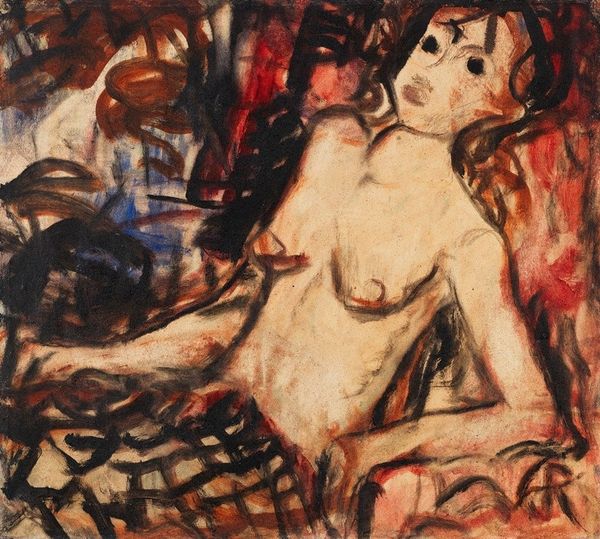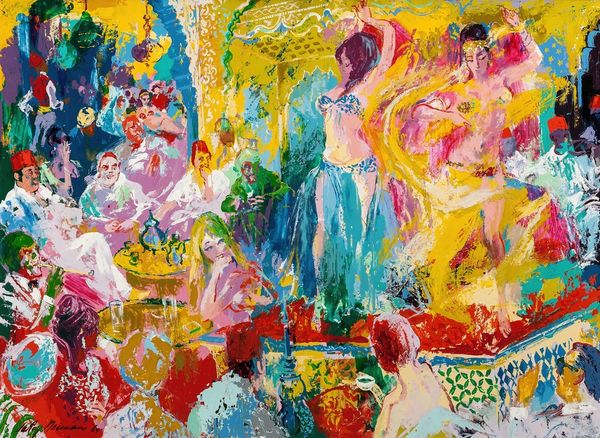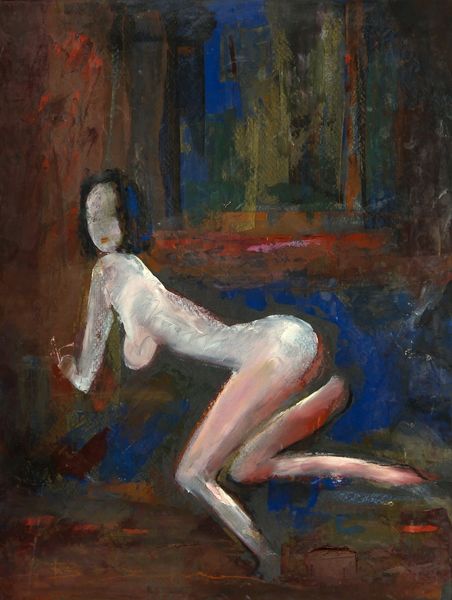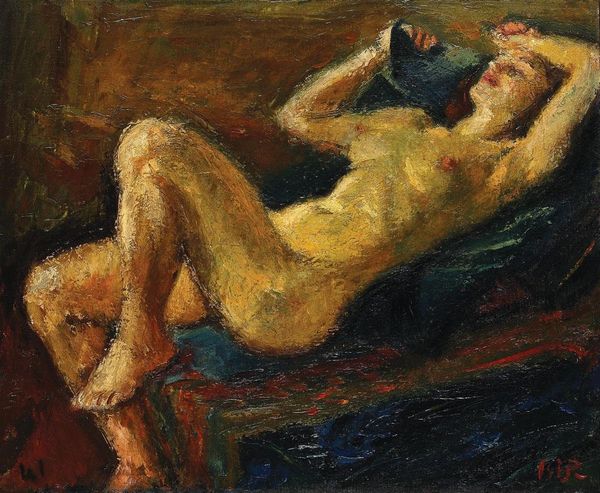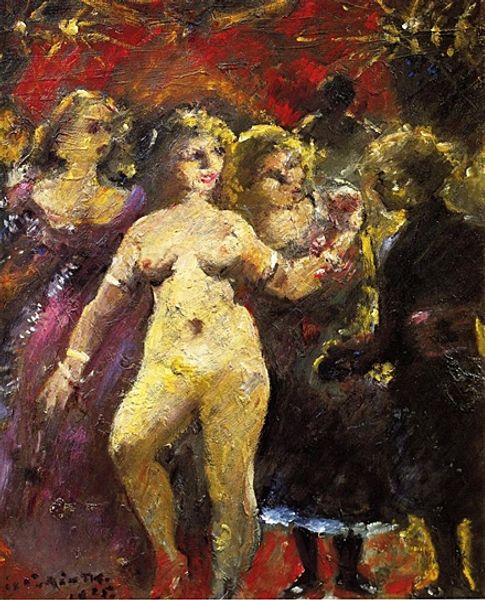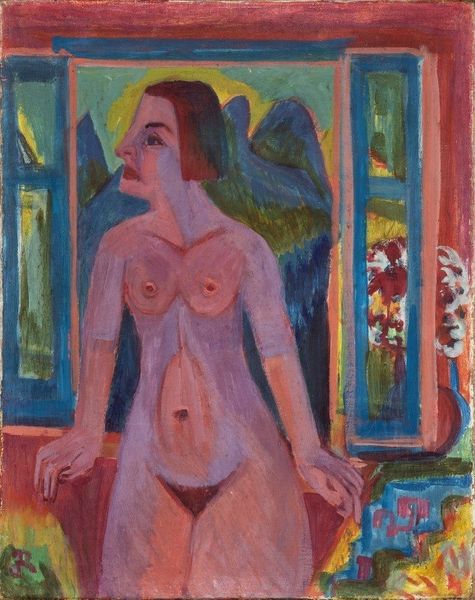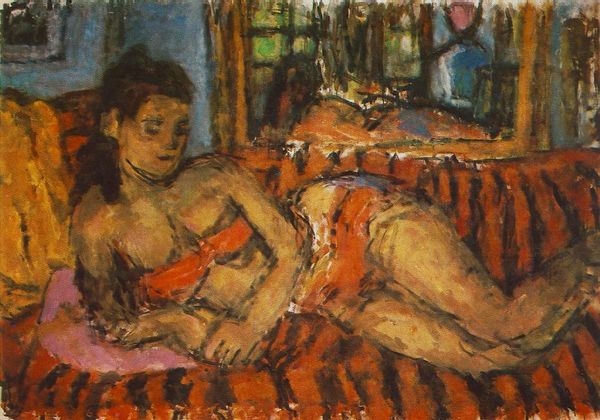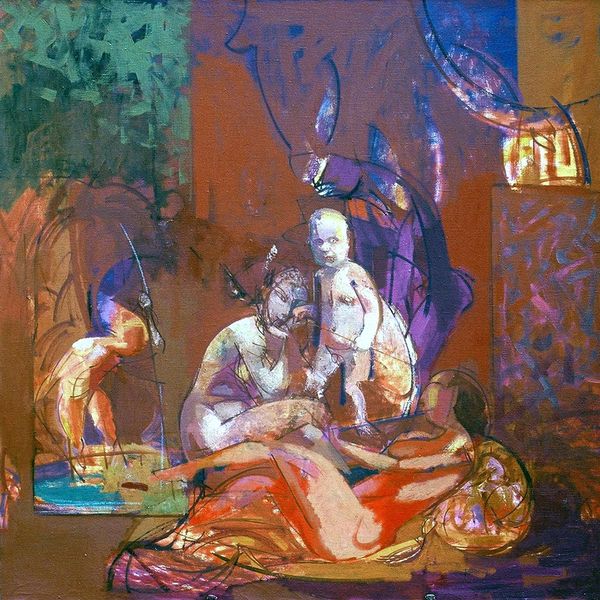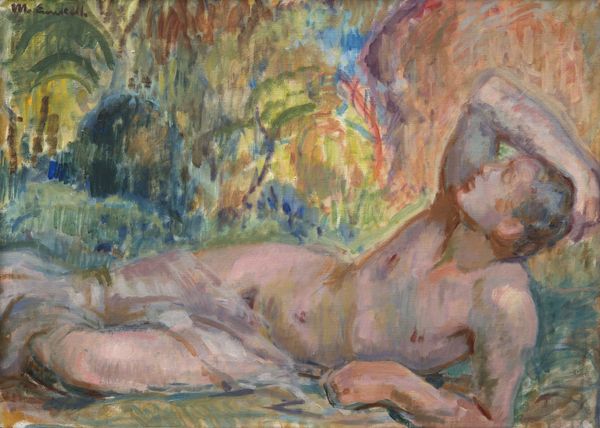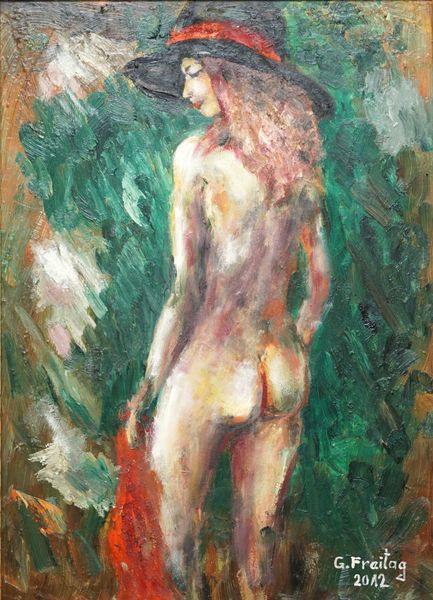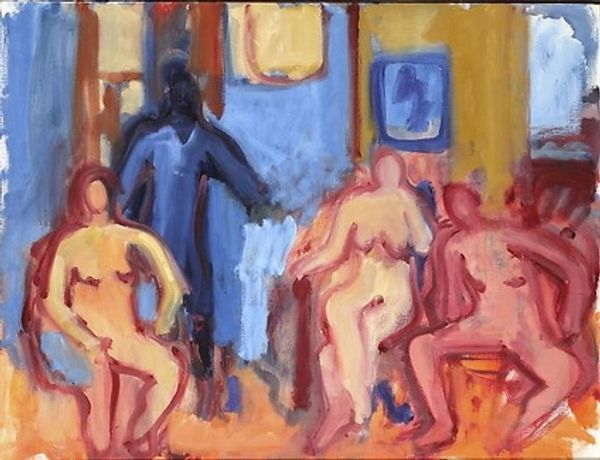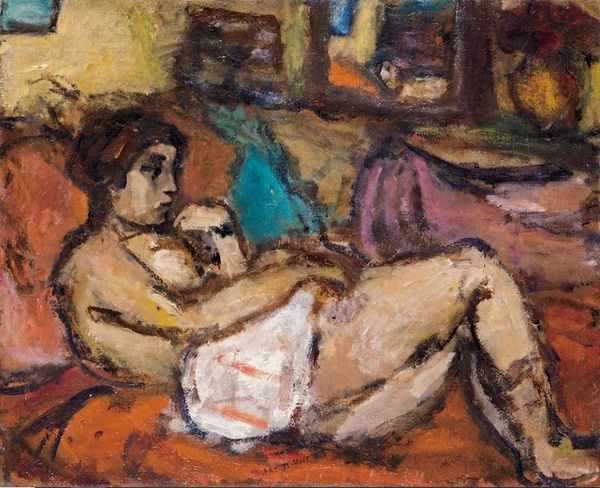
oil-paint
#
portrait
#
figurative
#
canvas painting
#
oil-paint
#
figuration
#
oil painting
#
expressionism
#
nude
#
expressionist
Copyright: Public Domain: Artvee
Curator: Zygmunt Waliszewski's "Lustereczko powiedz przecie..." painted in 1929. It's rendered in oil paint on canvas. Editor: It's… fleshy. Visceral, almost, the way the figures seem molded rather than painted. There's a heavy, textured application of paint. It makes it feel very raw, very much about the body as material. Curator: Waliszewski had a knack for the theatrical, even a bit of the grotesque. Look at the symbolism embedded here – the nude reclining figure, perhaps an odalisque, the attendants seemingly offering fruit and a mirror. The mirror reflecting an internal vision, or perhaps mocking vanity, it’s hard to say. Editor: Right, the mirror reflecting… not reality. It reflects a rather flat, cartoonish rendition of the figure’s face. I’m interested in how that disconnect comments on artifice, the labor involved in creating beauty and representation. The whole composition pushes at boundaries of portraiture and genre scene. Curator: It's evocative of fin-de-siècle decadence. Notice how he positions the figures, almost like players on a stage. They are acting out a symbolic drama of desire, beauty, and the fleeting nature of youth. And note, in Polish, the title suggests a corrupted fairytale. Editor: I’m also drawn to the use of the material itself to express the subject’s energy. The strokes aren't just describing form; they are contributing to this chaotic sensuality. What sort of brushstrokes, layering, and glazes was Waliszewski using to obtain this density, this carnal expressiveness? Curator: It really places the viewer as a voyeur. You're drawn into this intensely personal, almost claustrophobic space. There is an undeniable psychological intensity there, something almost unsettling beneath the surface charm. It makes me think of anxieties around sexuality and representation surfacing. Editor: The scale of the work makes this reading all the more interesting: does a painting force a certain degree of intimacy or monumentality on its maker or viewer? Curator: Seeing how he reworks classic mythological and narrative tropes certainly give us insights into anxieties of the time. Thank you for pointing out that the labor is palpable here. It keeps us honest as we confront how such symbolism continues to inform even contemporary self-conceptions and narratives. Editor: It reminds us, the visual world that surrounds us—it's not "natural" but produced. An effect. Very well said.
Comments
No comments
Be the first to comment and join the conversation on the ultimate creative platform.
